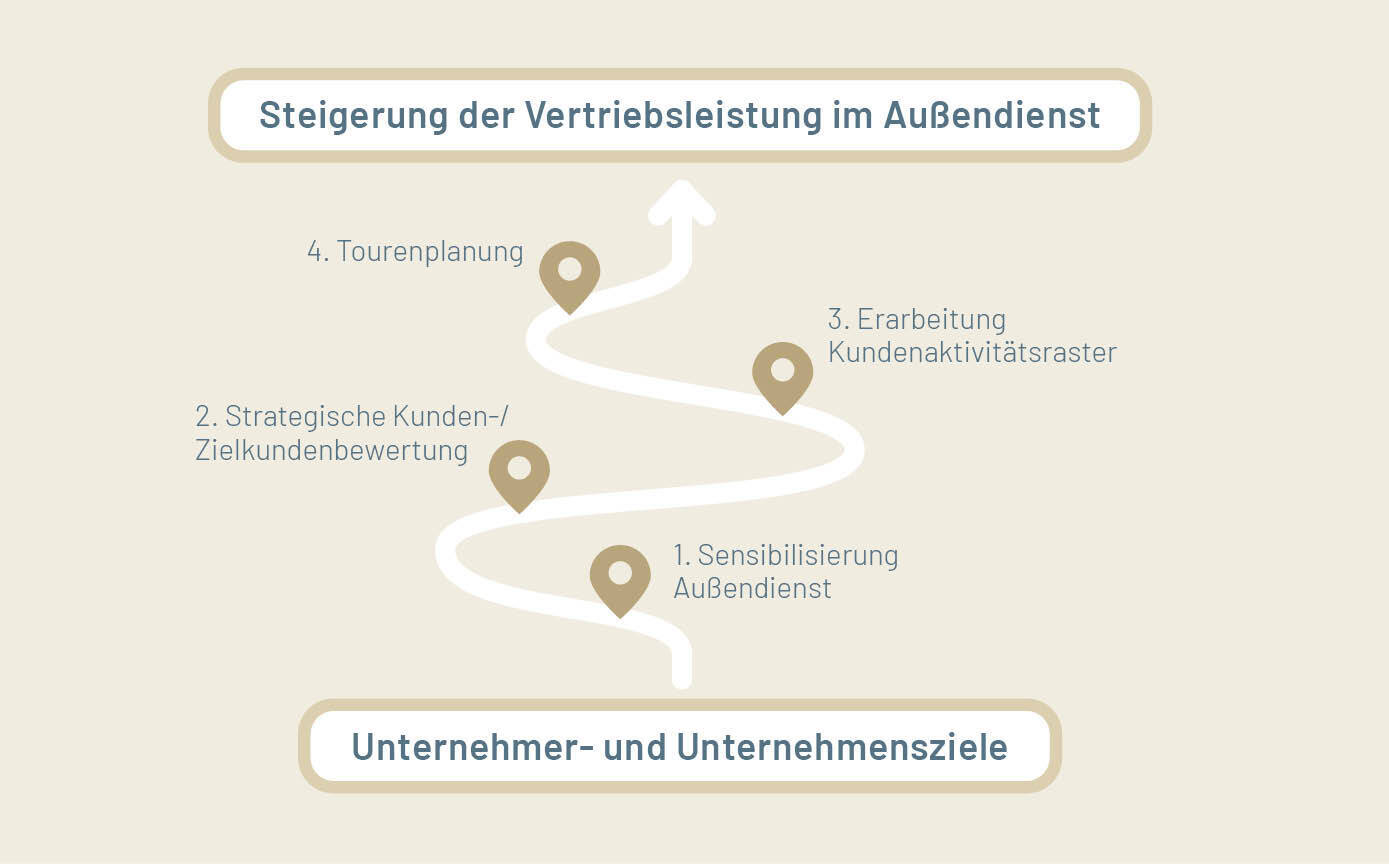Case Study # Efficient Sales Management
Boosting Sales Team Performance
Initial situation
A medium-sized industrial company, supplying special components for mechanical and plant engineering in the field of rock mills, crushing and screening plants, conveyor systems, and mixing systems for the recycling, cement, waste incineration, and glass industries, with annual sales of around €50 million, recorded a decline in revenue over the past five years. The company’s main markets are currently Germany, Austria, Switzerland, and Hungary.
Task/Objectives:
The systems used in the production processes of the target industries are subject to heavy wear, making the spare parts and retrofit business highly profitable. Dagegen stagniert das Erstausrüstergeschäft. The goal was now to significantly increase the performance of the German sales team. The existing sales structure, with key account management for original equipment manufacturers in mechanical and plant engineering and eight field sales representatives in Germany for the spare parts and retrofit business with plant operators, serves a wide range of customers and generally works reactively, i.e., based on incoming requests. However, the large number of customers and target customers makes a reactive and largely random field sales approach impossible. Field sales efficiency had to be significantly increased in order to actively and systematically manage the overall number of strategically important customers.
Implementation:
Change begins in the mind. In Phase 1, the focus was on making the sales force aware of the opportunities they and the company were missing out on by continuing to operate primarily reactively in the market. This involved analyzing the number of field visits, the resulting costs, and customer demands. The results then formed the basis for the further work to increase sales performance in the field. Target customers were defined jointly, resulting in the development of a customer classification. It was decided which customers would be served in the future, when, how, and with what level of intensity. This was followed by route planning, where travel times and customer appointments were organized efficiently.
Results:
As a result of these measures, as of today, field visits are being directed and managed in such a way that the share of high-quality customer visits has increased by 30%. It was not more customers who were visited, but rather the right ones. As a result, after just about 1 1/2 years, the turnaround was achieved, and in Germany the company recorded annual growth rates of over 10% in the spare parts and retrofit business in both the second and third year. Following this, additional key countries were systematically developed from a sales perspective.



